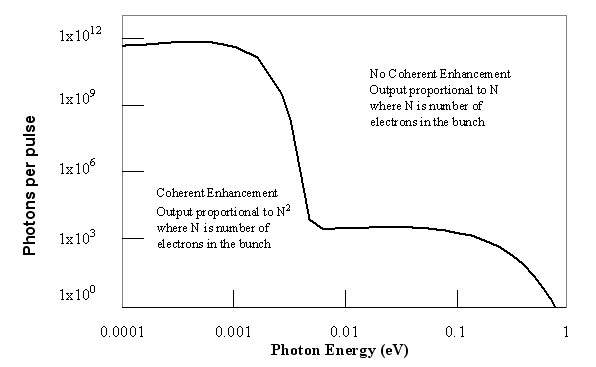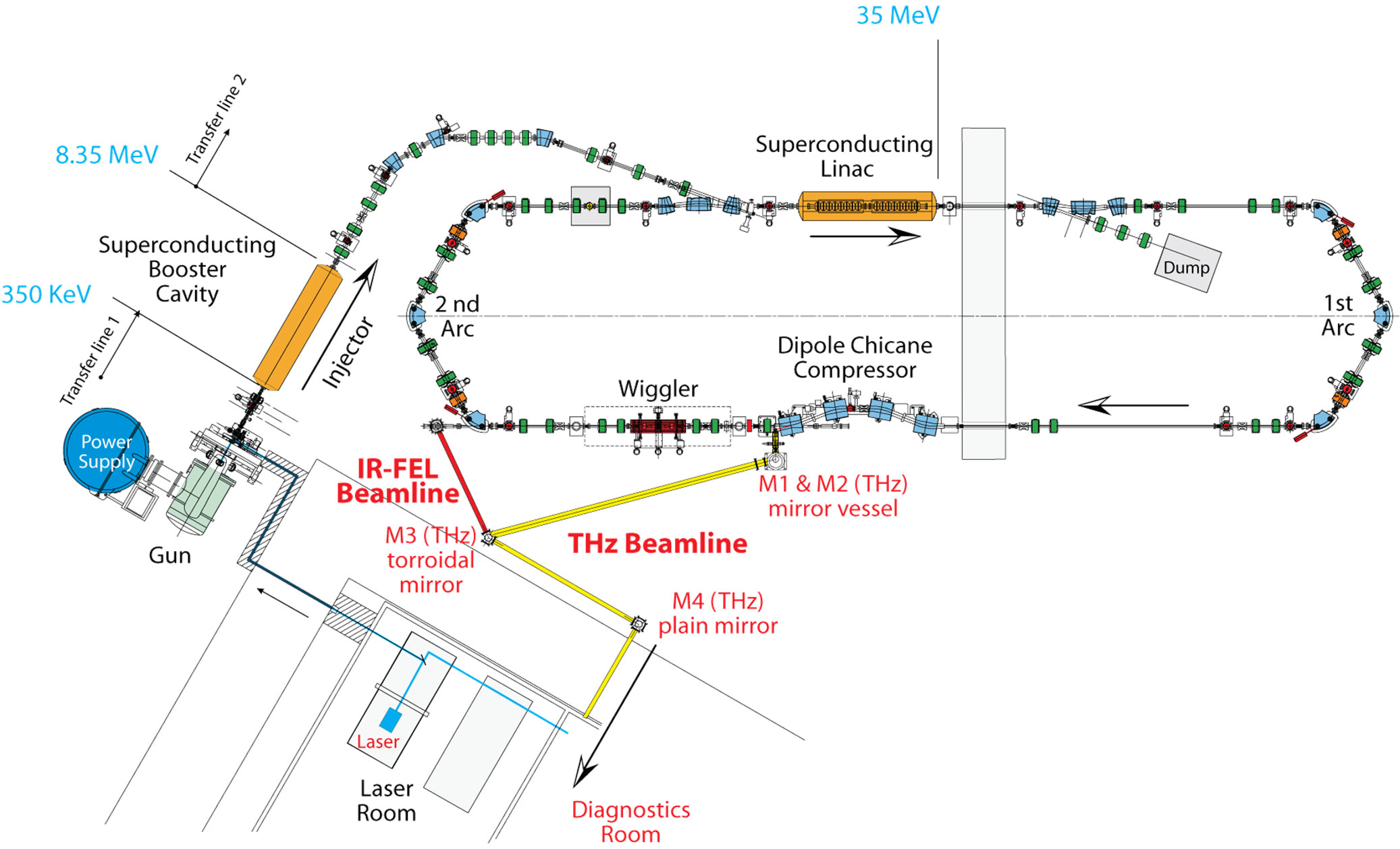In the ALICE accelerator the electron bunch is compressed to ~1ps duration in a compression chicane consisting of four dipole magnets immediately upstream of the free electron laser. As maximum compression is reached in the fourth dipole, intense broadband THz radiation is emitted at wavelengths longer than the electron bunch length. Typical THz parameters are given in the table below:
| Parameter | Value |
| Macropulse repetition rate (MHz) | 40.625 |
| Macro bunch length (μs) | ≤100 |
| Number of micropulses/macropulse | ≤4060 |
| Bunch train (macropulse) repetition rate (Hz) | 10 |
| Wavelength range (THz) (determined by filters) | >0.6 mm;<0.5 THz |
| THz energy per pulse (nJ) | 70 (at source) |
| Peak power (MW) | ~0.07 (at source) |
| THz energy per train (μJ) | 283 (at source) |
| Average power within macropulse (W) | 2.84 (at source) |
The graph shows the number of photons per pulse per 0.1% bandwidth emitted into a 60mrad extraction aperture for a modelled 0.6ps (rms) Gaussian bunch. The effect of coherent enhancement at wavelengths longer than the electron bunch length is evident.

Terahertz radiation for the study of biological and medical problems
The construction of a terahertz beamline from the ALICE accelerator into a tissue culture facility for the growth of human tissue has created a unique facility for the study of biological systems. The terahertz beamline provides the most intense source of broad-band THz radiation in Europe, the third most intense in the world and the only one equipped with a capability for the study of live human cells

Fig. 3: The photograph above shows the upper floor of the tissue culture facility. The THz beamline that directs the THz radiation from the energy recovery linear accelerator to the TCF is illustrated on the right.
One of the goals of the research programme is to establish the safe level of human exposure to THz radiation. The development of security screening systems based on THz radiation means that humans will be increasingly exposed to THz radiation. It is important to establish the safe level of repeated low-level exposure to radiation in this frequency range.
Low power THz systems are already in use for the characterisation of cancerous tissue removed in surgery and are being developed for the diagnosis of skin cancers. Unfortunately the low power levels available with such systems, which are in the mW to mW range, make it difficult to establish clear clinical protocols. The high peak power available with the THz beamline, 70 kW, makes it possible to resolve these problems and may lead to the development of low cost portable instruments for diagnosis and tissue characterisation.
You can find more scientific details of results from the THz Research Programme in a paper in the journal of Physics in Medicine and Biology (link opens in a new window).
The programme is lead by Professor Peter Weightman of the physics department of Liverpool University and colleagues from the Daresbury Laboratory and the departments of clinical engineering and cell biology and the school of biological sciences from the University of Liverpool.
